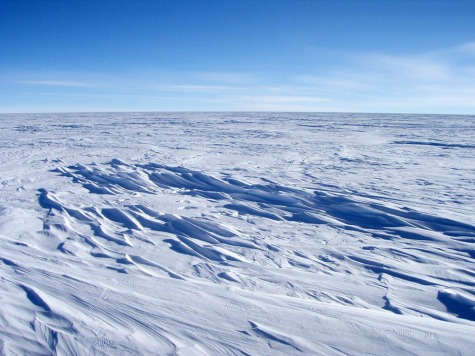
The National Snow and Ice Data Center (NSID), with the support of the NASA Earth Sciences, just announced that Antarctic sea ice has expanded to all-time record levels for April. Last month the ice expanded by more than 42.5 square miles and continues to grow in May.
The NSID said the rapid expansion of sea ice that continued into May and the seasonal cover was now bigger by a significant margin than any past measurements. According to the Center, “This exceeds the past record for the satellite era by about 123.6 square miles, which was set in April 2008.”
Increased ice cover in the Antarctic is contrasted to falling Arctic ice levels, where the summer melt has again pushed levels below the average extent for 1981-2010. The Center said that while the rate of Arctic-wide retreat was rapid through the first half of April, it had slowed later in the month. But the April “Arctic minimum” was still 104.3 square miles greater than the record April low, which occurred in 2007.
Sea ice differs between the Arctic and Antarctic, primarily because of their different geography. The Arctic is a semi-enclosed ocean, almost completely surrounded by land. As a result, the sea ice that forms in the Arctic is not as mobile as sea ice in the Antarctic. Although sea ice moves around the Arctic basin, it tends to stay in the cold Arctic waters. Flows are more prone to converge and pile up into thick ridges. These converging flows make Arctic ice thicker and leads to ice that stays frozen longer during the summer melt. Of the 5.8 million square miles of sea ice that exist during winter, on average 2.7 million square miles remain at the end of the summer melt season.
The Antarctic is a land mass surrounded by an ocean. The open ocean allows the forming sea ice to move more freely, resulting in higher drift speeds. Because there is no land boundary to the north, the sea ice is free to float northward into warmer waters where it eventually melts. As a result, almost all of the sea ice that forms during the Antarctic winter melts during the summer. During the winter, up to 6.9 million square miles of ocean is covered by sea ice, but by the end of summer, only about 1.1 million square miles of sea ice remain.
The NSID said the 2014 Antarctic “sea ice extent anomalies were greatest in the eastern Weddell Sea and along a long stretch of coastline south of Australia and the southeastern Indian Ocean.” The Center said the increased ice extent appeared to be caused by persistent easterly winds in March and April and lower-than-average temperatures.
Changing wind patterns are increasingly cited to explain the expanding Antarctic sea ice. Research suggests that the changes in Antarctic sea ice are at least partially caused by the strengthening of the westerly winds that flow continuously in a circle above the Southern Ocean.
The author welcomes feedback and will respond to comments by readers.

COMMENTS
Please let us know if you're having issues with commenting.